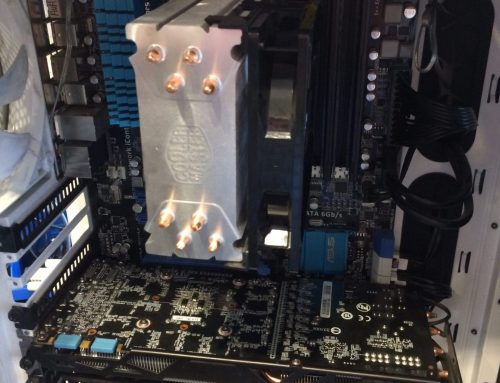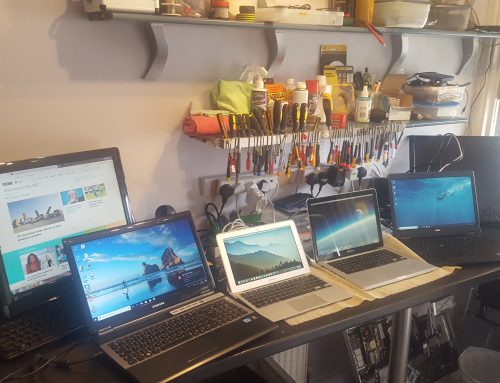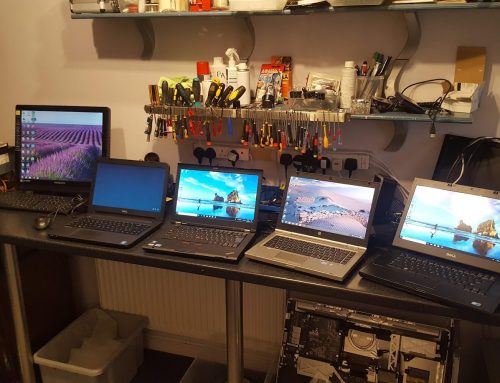PC Workshop took a call form a returning customer on the Bank Holiday Sunday ref a very noisy gaming tower and the callers son was disappointed as it meant he wasn’t able to play his online games for the background noise being extreme, I asked him to bring it in the following morning and he was here for 9am 🙂 The culprit was the Power Supply Unit = PSU which was making the racket, but as they’re a sealed unit they cannot be lubricated and the unit must be replaced!
With this being a hi powered gaming PC it required a 700 Watt PSU whereas the “normal” size is around 350 these days but as we see a growing number of “gamers” call on our services we carry the units in stock.
Once exchanged the tower was running as quiet as a church mouse and both lad and dad were pleased especially as it was Bank Holiday Monday and they expected a much longer wait!
Here at PC Workshop we always see a glut of power problems effecting computer systems be it laptop or tower at this time of year, it appears the national grid isn’t quite as stable as we may like to think as the number of blown components always rises in the dark nights of autumn / winter.
Now a power supply unit isn’t the most expensive part of a computer or the most complex but without an operational one nothing will work which doesn’t mean to say that you’ve lost all your documents, pictures etc as the hard drive doesn’t suddenly become corrupt (well rarely) and even then we have ways and means of extracting data from the deadest of equipment. we’d better have for the monies we’ve paid out for data recovery programmes.
It is rarely recommended that an inexperienced user open a power supply to make repairs because of the dangerous high voltages present. Even when unplugged, power supplies can retain dangerous voltage and must be discharged (like a monitor) before service. Such internal repairs are beyond the scope of this book and are specifically not recommended unless the technician knows what he is doing.
Many symptoms lead me to suspect that the power supply in a system is failing. This can sometimes be difficult for an inexperienced technician to see because, at times little connection seems to exist between the symptom and the cause-the power supply.
For example, in many cases a parity check error message can indicate a problem with the power supply. This might seem strange because the parity check message specifically refers to memory that has failed. The connection is that the power supply powers the memory, and memory with inadequate power fails.
It takes some experience to know when this type of failure is power related and not caused by the memory. One clue is the repeatability of the problem. If the parity check message (or other problem) appears frequently and identifies the same memory location each time, I would suspect that defective memory is the problem. However, if the problem seems random, or if the memory location the error message cites as having failed seems random, I would suspect improper power as the culprit. The following is a list of PC problems that often are related to the power supply:
- Computer randomly turns off
- Computer won’t always turn on
- Computer turns on, but fails on bios checks
- Computer starts smoking
- Any power-on or system startup failures or lockups.
- Spontaneous rebooting or intermittent lockups during normal operation.
- Intermittent parity check or other memory-type errors.
- Hard disk and fan simultaneously failing to spin (no +12v).
- Overheating due to fan failure.
- Small brownouts cause the system to reset.
- Electric shocks felt on the system case or connectors.
Slight static discharges disrupt system operation.
In fact, just about any intermittent system problem can be caused by the power supply. I always suspect the supply when flaky system operation is a symptom. Of course, the following fairly obvious symptoms point right to the power supply as a possible cause:
- System is completely dead (no fan, no cursor)
- Smoke
- Blown circuit breakers
This can also apply to laptops when its is running solely when its running on DC only as the battery is no longer doing its job.




